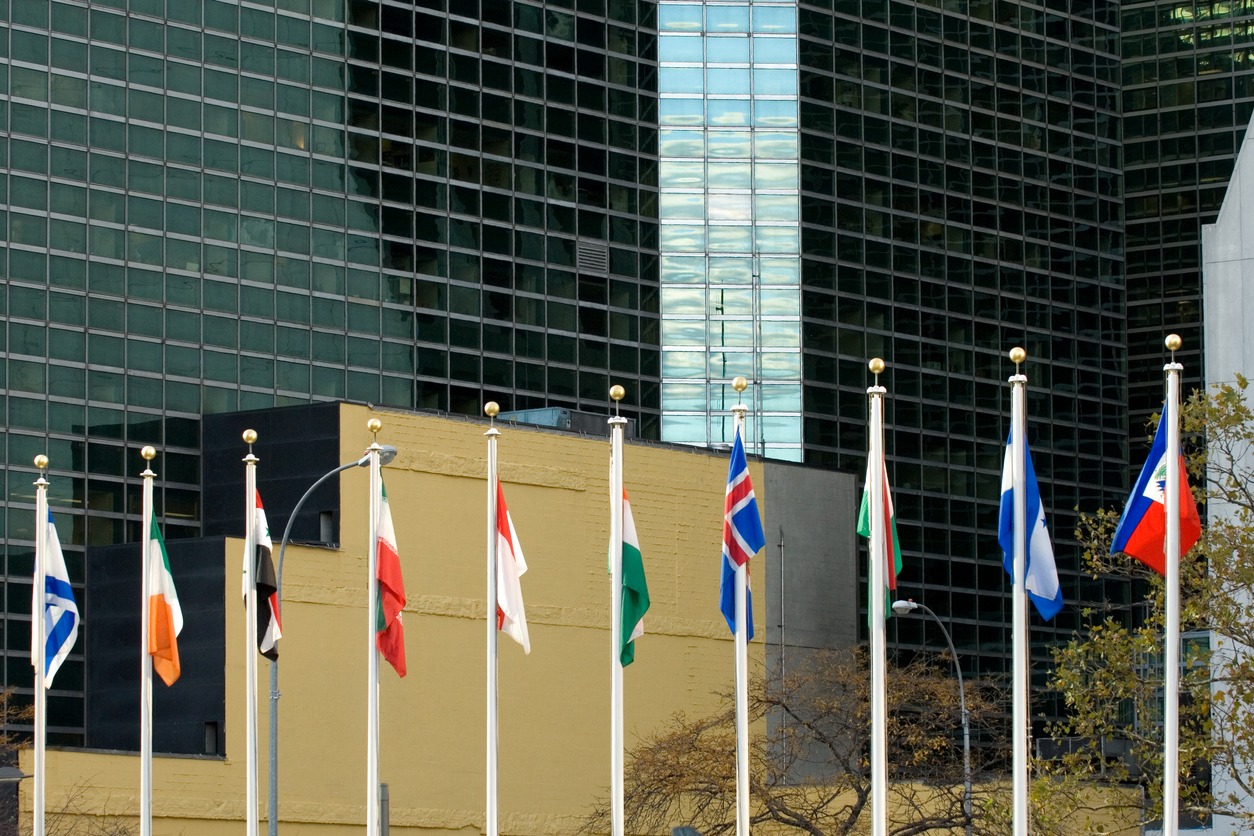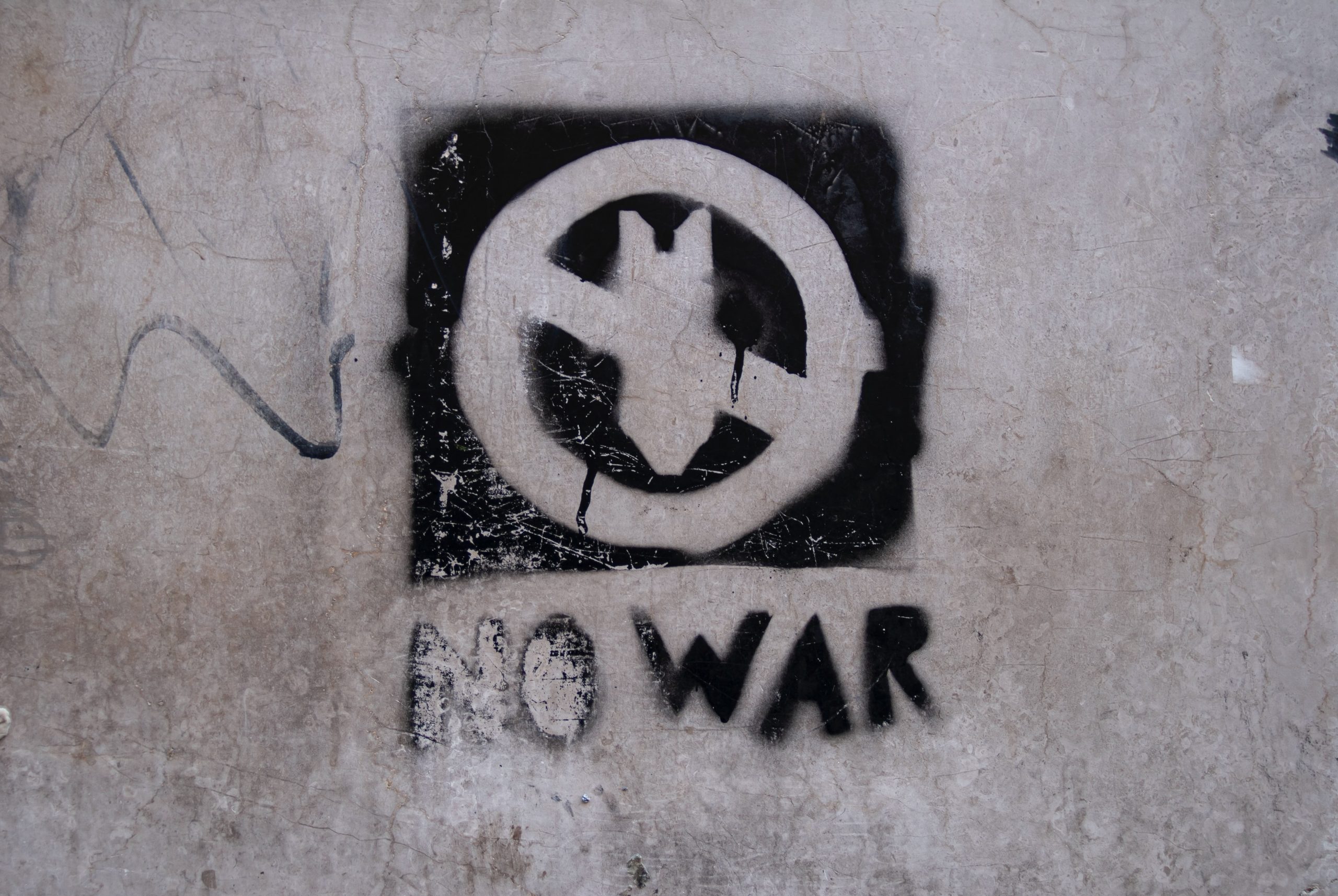The UN Draft Treaty To Ban the Bomb is an Important Milestone on the Road to Nuclear Abolition
The recently published draft text of a convention to ban the bomb provides a good basis to complete negotiations of a treaty to prohibit the acquisition, development, production, manufacture, possession, transfer, testing, extra-territorial stationing and use of nuclear weapons as major steps on the road to abolition.
The state of nuclear arms control in 2017 shows three overriding characteristics:
1. There are currently no negotiations or discussions on arms control being conducted at all between any two or more of the nine countries that possess nuclear weapons (China, France, India, Israel, North Korea, Pakistan, Russia, UK, USA);
2. The Preparatory Committee (PrepCom) process for the 2020 five-yearly Nuclear Non-proliferation Treaty (NPT) Review Conference began with the first PrepCom in Vienna on 2–12 May. The 2020 conference will mark the 50th anniversary of the NPT entering into force;
3. The UN-mandated conference to negotiate a legally binding instrument to prohibit nuclear weapons, leading towards their eventual elimination, held its first session in New York on 27–31 March and will resume on 15 June and conclude on 7 July.
On 22 May, Elayne Whyte Gomez, president of the UN ban treaty conference, released a draft text of the convention. The draft convention marks an important milestone in the long campaign to ban the most indiscriminately inhumane weapons ever invented. It affirms that signing it will not affect the rights and obligations of members under the NPT. Rooted in humanitarian principles, the text provides a good basis to complete negotiations of a treaty to prohibit the acquisition, development, production, manufacture, possession, transfer, testing, extra-territorial stationing and use of nuclear weapons as major steps on the road to abolition. It will enter into force 90 days after the fortieth ratification.
The March conference was attended by 132 countries, accounting for two-thirds of the NPT membership. The NPT is the normative sheet anchor of global nuclear orders, from peaceful uses to nuclear safety and security, nonproliferation, and disarmament. Article VI obligates signatories to eliminate their nuclear weapons. In an advisory opinion in 1996, the World Court strengthened this by saying that the nuclear powers have the obligation not just to pursue good faith negotiations on nuclear disarmament, but to bring them to a conclusion.
Yet, 21 years after the World Court’s opinion and 49 years since the NPT’s signing, there are still around 15,000 nuclear weapons in the arsenals of nine countries. Four of these – India, Israel, North Korea, Pakistan – represent a breach of the NPT’s nonproliferation barrier. Moreover, four – China, India, North Korea, Pakistan – are still enlarging their nuclear stockpiles; North Korea is still testing nuclear weapons; and all nine are modernizing, upgrading or expanding nuclear-weapon delivery platforms.
The non-nuclear-weapon NPT countries have repeatedly called on the nuclear powers to honour the NPT disarmament obligation and abolish nuclear weapons through a legally binding treaty. Promises are made at the five-yearly NPT review conferences and then ignored or broken. Efforts by the non-nuclear countries to hold states accountable for internationally made promises have gone nowhere. Meanwhile nuclear threats have become more acute and numerous.
The combination of growing awareness of nuclear threats and rising impatience and frustration with the perceived wilful obstructionism of the nuclear-armed states generated a powerful alliance of civil society activists and like-minded states rooted in humanitarian principles. They came together in three humanitarian consequences conferences in Norway, Mexico and Austria in 2013–14. At the conclusion of the last in Vienna on 9 December 2014, 127 of the 158 attending countries signed a humanitarian pledge ‘to stigmatise, prohibit and eliminate nuclear weapons’. The draft UN treaty seeks to give effect to that pledge.
None of the nine nuclear-armed countries, and almost none of the many NATO and Pacific allies who shelter under the US nuclear umbrella, attended the UN conference, describing it as impractical, ineffective and likely to damage the NPT. Japan walked out after delivering an opening statement sharply critical of the conference, leaving the dwindling number of atomic bomb survivors, called hibakusha, ‘heartbroken’. Australia is among ‘the most outspoken of the non-nuclear states’ in attacking the very concept of a special UN conference instead of the building blocks or step-by-step approach of engaging with the countries that possess nuclear weapons to reduce their stockpiles.
Curiously, the draft text requires disarmament by those who already possess nuclear weapons as a precondition of signing, rather than an obligation to disarm consequent to signing. Confusingly, ‘Proposals for further effective measures relating to nuclear disarmament, including provisions for the verified and irreversible elimination of any remaining nuclear weapon programmes … may be considered’ at subsequent conferences. The first meeting of states parties will be convened by the UN Secretary-General within one year of the convention’s entry into force.
India, Israel and Pakistan could sign the treaty and acquire the same status but also the same obligations under this treaty as the NPT nuclear weapon states. At first glance, the safeguards standard required under the ban treaty to prevent clandestine diversion of nuclear materials into weapon programs also seems weaker than existing safeguards applied by the IAEA under the NPT framework.
But in most other key respects the draft text is significantly stronger than the NPT. Four are especially noteworthy. First, it prohibits the possession of nuclear weapons for all signatories and thus avoids the creation of nuclear apartheid between those who have the bomb and others. Second, it bans the use of nuclear weapons. Third, it prohibits nuclear testing and is thus more closely aligned to the Comprehensive Test-Ban Treaty. And fourth, it bans the stationing of nuclear weapons, so signatories would be legally required to ask for the withdrawal of all warheads stationed on their territory. This would affect NATO allies like Germany and Turkey but not any of the three Pacific allies (South Korea, Japan, Australia), although it would preclude the reintroduction of US tactical weapons into South Korea.
There is an odd provision in the treaty: any party that ‘manufactured, possessed or otherwise acquired … nuclear explosive devices after 5 December 2001’ must declare this to the UN Secretary-General. The significance of this odd date apparently is that Belarus, Kazakhstan and Ukraine agreed to the elimination of all nuclear strategic offensive arms located in their territories seven years after the Lisbon Protocol took effect on 5 December 1994. The practical consequence is that North Korea – but not India, Israel and Pakistan – would be required to make such a declaration.
From one point of view the UN-mandated conference is a vote of no confidence in the NPT process and poor outcomes that poses an existential threat to the NPT. Paul Meyer, a former Canadian disarmament ambassador, believes that the NPT ‘is in mortal peril’ because an ‘enormous fissure has opened regarding the right course of action to realize the treaty’s disarmament objectives’. That a draft text has been produced after just one brief session of the UN conference can only be an indictment of the NPT framework and process working through the moribund Conference on Disarmament in Geneva that has not even agreed on a program of work for two decades.
As a postscript, the last time we joined the US to defy the will of the international community, on an issue of national and international security, was in the Iraq war in 2003. That turned out really well.
About the Author
Ramesh Thakur is director of the Centre for Nuclear Non-Proliferation and Disarmament, Australian National University.
This article was originally written for the Nuclear Threat Monitor and was published on Pearls and Irritations here.
Disclaimer: The views expressed in this commentary are those of the author and do not necessarily reflect the official position of the Asia-Pacific Leadership Network or any of its members.
Image: Unsplash stock, Humphrey Muleba.




